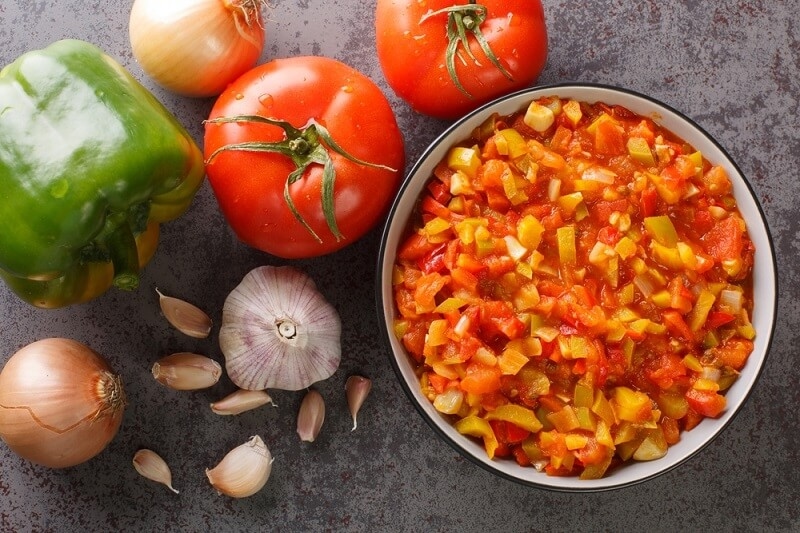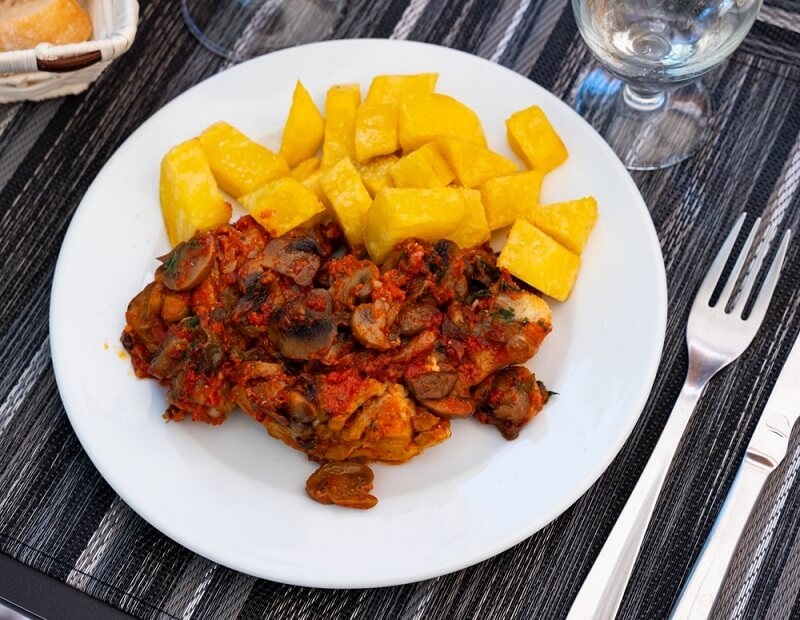
Few techniques epitomize cooking in Spain more than making Spanish sofrito. This humble combination of tomatoes, onions, garlic, and olive oil has been the basis for many dishes for centuries. Spanish cuisine, and Spain itself, holds the culture of an authentic sofrito recipe that Spain cherishes. It isn’t the only application. Let’s examine how a Spanish sofrito usually works when preparing a cooking base for Spanish stews. Regardless of what you are preparing, whether it's a rustic family meal with the tomato-onion-garlic sofrito or a flavorful base for a paella-type dish, you will significantly improve every dish with the most valuable culinary preparation technique, sofrito.
This guide will teach you about the history, types, step-by-step preparation, and cultural importance of making sofrito. You’ll also learn how it can elevate the most everyday ingredients to fantastic meals, why it’s so central to cooking in Spain, and how to apply this famous base to your kitchen.
The sofrito recipe we know in Spain today is centuries old. The word “sofrito” comes from the verb “sofreír,” which means “lightly fry” or “sauté.” The name implies that one creates a sofrito by gently frying comforting aromatics like onions, garlic, and tomatoes in olive oil, releasing their natural sweetness.
Although Spanish cooks created a sofrito to build flavor for base dishes like stews, sauces, and rice dishes, the Mediterranean climate produces so many tomatoes, peppers, and onions that it is a logical foundation for Spanish cooking basics.
The dish's beauty is that the ingredients are everyday ingredients, which makes the richness of the outcome deceptive; although simple, the companion flavors build value into the overall dish, leaving you deeply satisfied.
To get a handle on the foundation of Spanish cooking, you really need to master sofrito. Now, it's not just a sauce; it's the starting point for many dishes. By starting with Spanish sofrito, you lay down a significant, flavored base for the recipes to build on.
Without sofrito, Spanish cooking would lack complexity and its harmony.
Sofrito is a tomato, onion, and garlic slowly cooking in olive oil. The ingredients are what make it what it is:
Depending on the dish, optional ingredients or variants may include peppers, paprika, or herbs; however, the essential trio of tomato, onion, and garlic is what makes the sofrito recipe that Spain is proud of.
Each step of our process of making Spanish sofrito is not rushed. Please think of the beauty of slow cooking, as it turns simple vegetables into a rich, deep, flavorful base with the magic of time!
If you have had a Spanish stew, you have tasted sofrito. Sofrito serves as the cooking base that Spanish stews rely on. While stews rely on their complex flavors to shine through with the meats, legumes, and vegetables, their sophisticated layers will build an excellent pairing with the chickpeas in cocido madrileño, the beans in fabada asturiana, or even the fish and shellfish in a hearty coastal stew.
By making the sofrito first, cooks can ensure that each spoonful of stew showcases warmth and richness. Traditional stews would suffer greatly without the foundation of a proper sofrito.
The tomato, onion, and garlic sofrito is the most common variation in Spain, with each element bringing balance:
When all those elements are slowly cooked together, the result is a flavorful, versatile, and flexible base. This flavor trio is perfect for adding to paella, braising meats, sauces, and stews. It is the trifecta of all Spanish sofrito!

Perhaps no dish better demonstrates sofrito’s importance than paella. The flavor base for paella always begins with sofrito, ensuring that rice absorbs every nuance.
Paella without sofrito would lack soul. The careful work of making Spanish sofrito transforms paella from rice and stock into a masterpiece of Spanish cuisine.
While the essential method remains the same, each Spanish region adapts sofrito to local ingredients:
These variations show how the sofrito recipe Spain uses is unified and diverse. Sofrito evolves with geography while staying central to the cuisine.
Sofrito doesn't just flavor dishes; it's also comforting. The scent that fills the kitchen is nostalgic and warm, indicating the start of a satisfying meal. Whether in a stew or sautéed for paella, sofrito brings soul to the basic elements of Spanish cooking and creates food that feels like home.
Following these guidelines allows you to give your Spanish-style sofrito recipe the depth and flavor of the real thing!
Though this guide discusses making Spanish sofrito, it is part of a worldwide family of sauces that fall under this name. In Latin America, sofrito includes peppers (fresh), cilantro, and culantro. The skill of making sofrito came with Spanish explorers, who adapted and evolved it into various versions using local ingredients throughout the Caribbean, the tropics, and South America. However, the Spanish sofrito with tomato, onion, and garlic continues to be the source from which these versions evolved.
Sofrito is not only for stews and paella—it’s a versatile base for many dishes:
Mastering Spanish cooking basics means realizing sofrito’s potential beyond traditional recipes.
Generations of Spanish cooks have passed down the art of making Spanish sofrito. Grandmothers teach it to children, chefs refine it in kitchens, and home cooks prepare it daily. Its tradition embodies Spain’s respect for slow cooking, local ingredients, and the power of simplicity.
By learning this technique, you participate in a culinary heritage that stretches back centuries.
The art of making Spanish sofrito is the foundation of Spain’s cuisine. From the sofrito recipe Spain perfected to its role as the cooking base for Spanish stews and flavor base for paella, sofrito remains essential. Built on the trio of tomato, onion, and garlic, this technique defines Spanish cooking basics and creates timeless flavor.
This content was created by AI